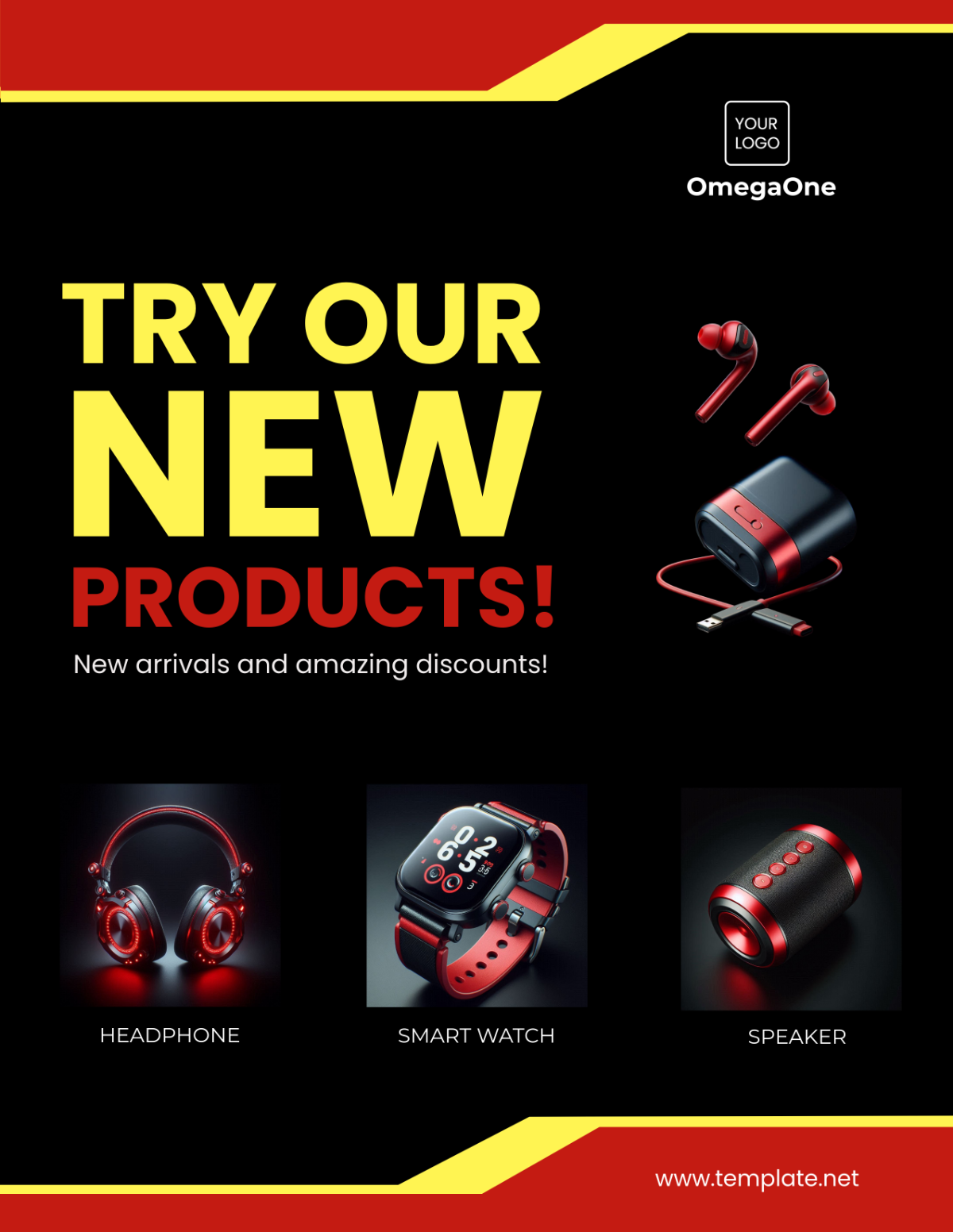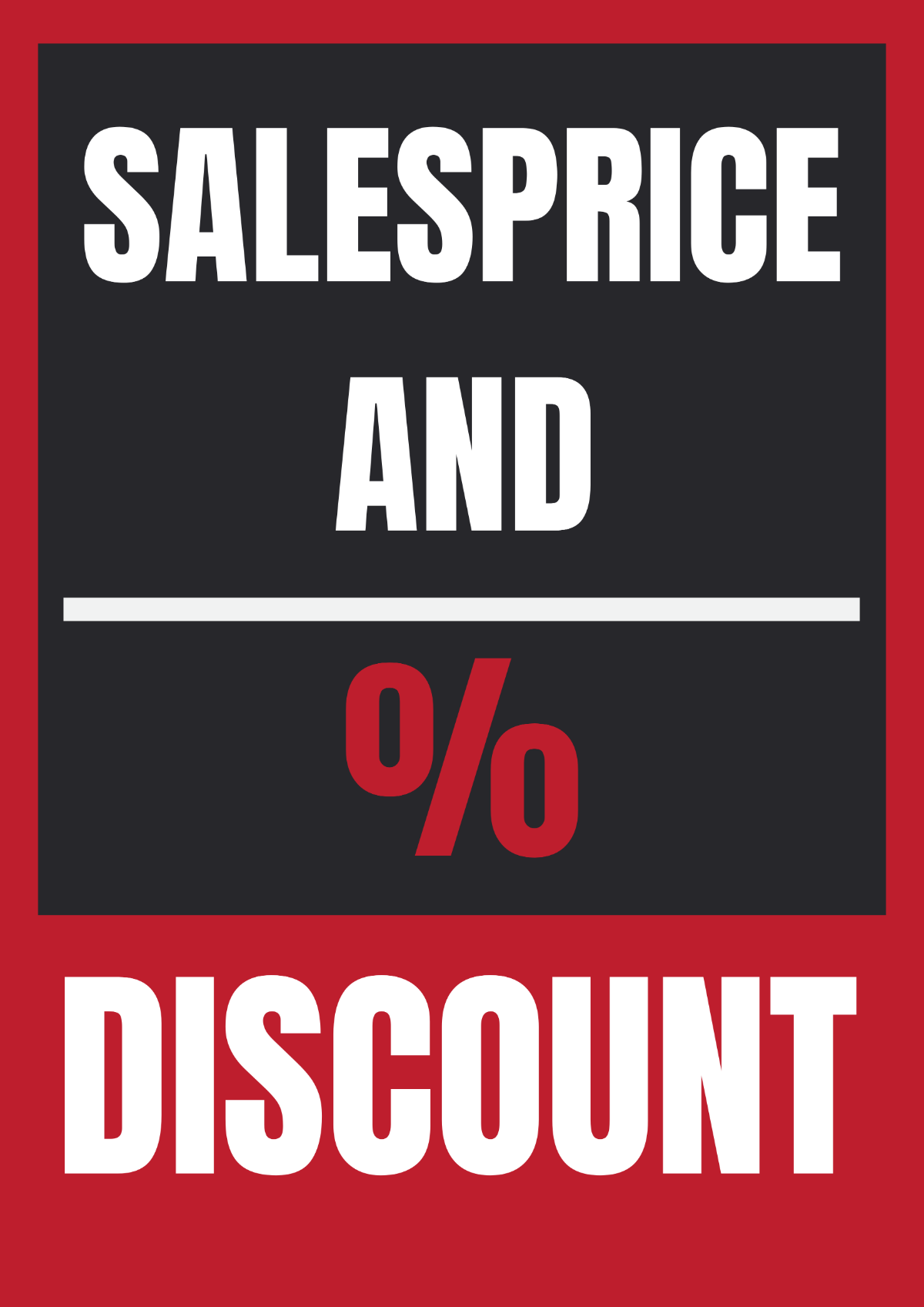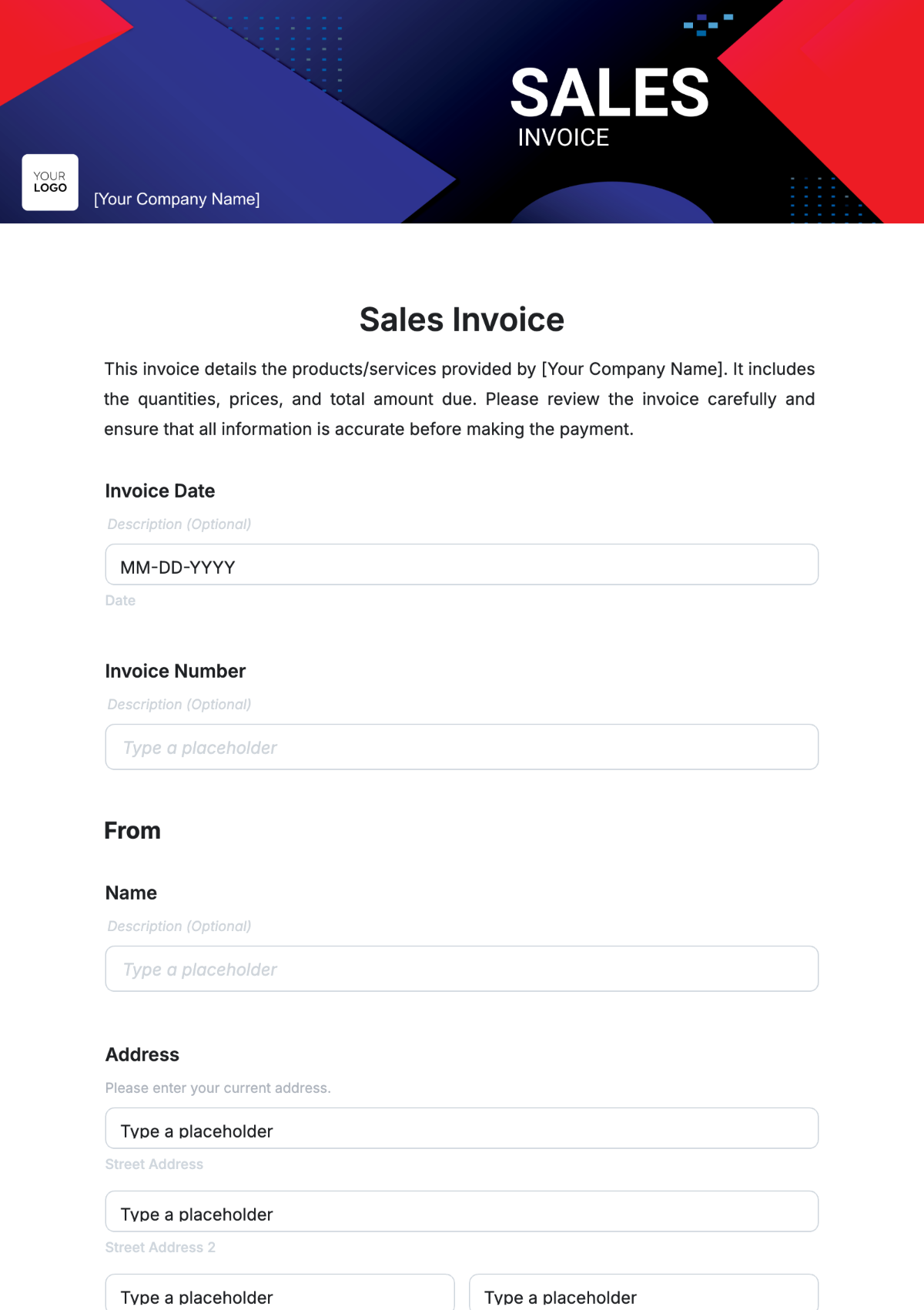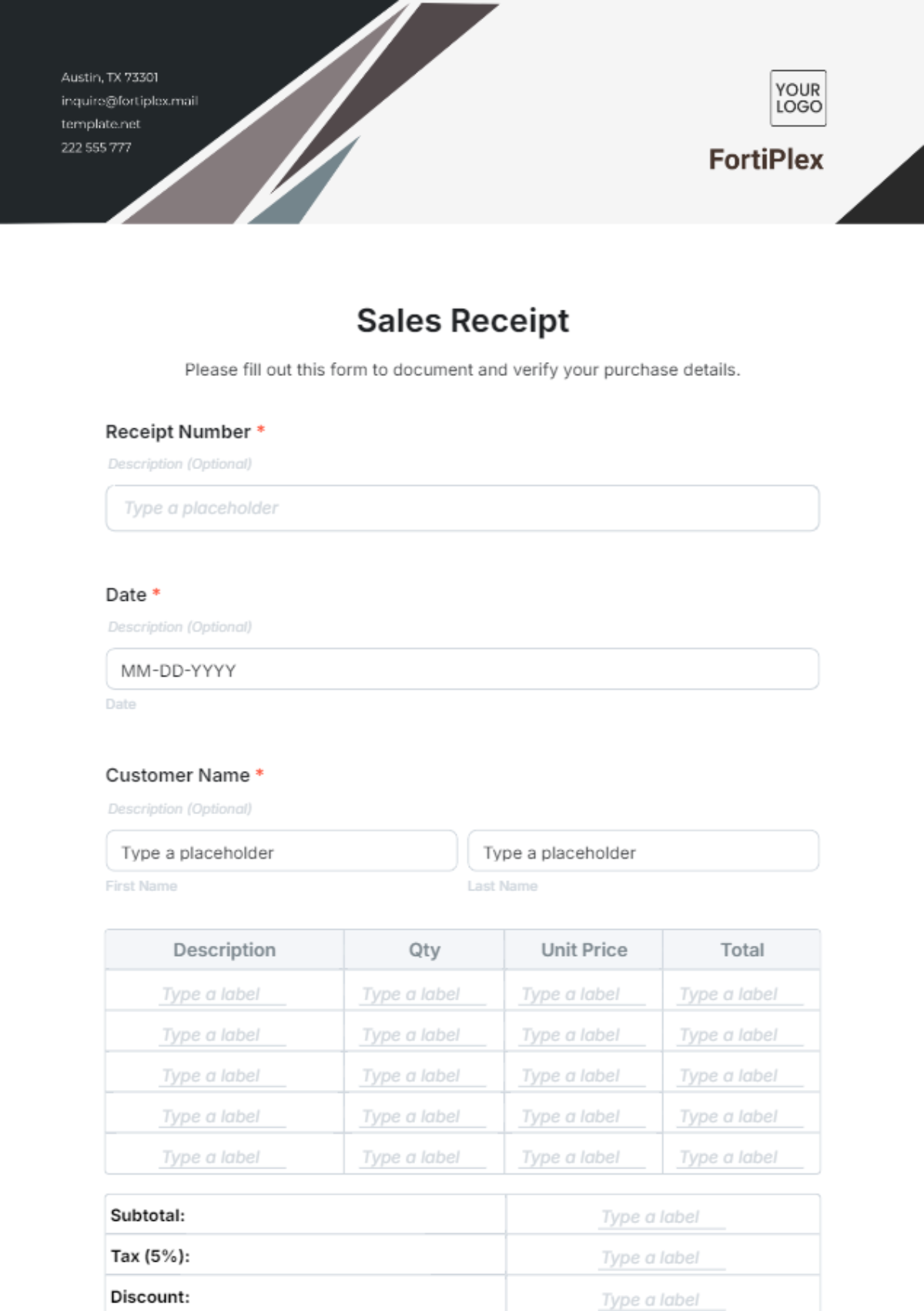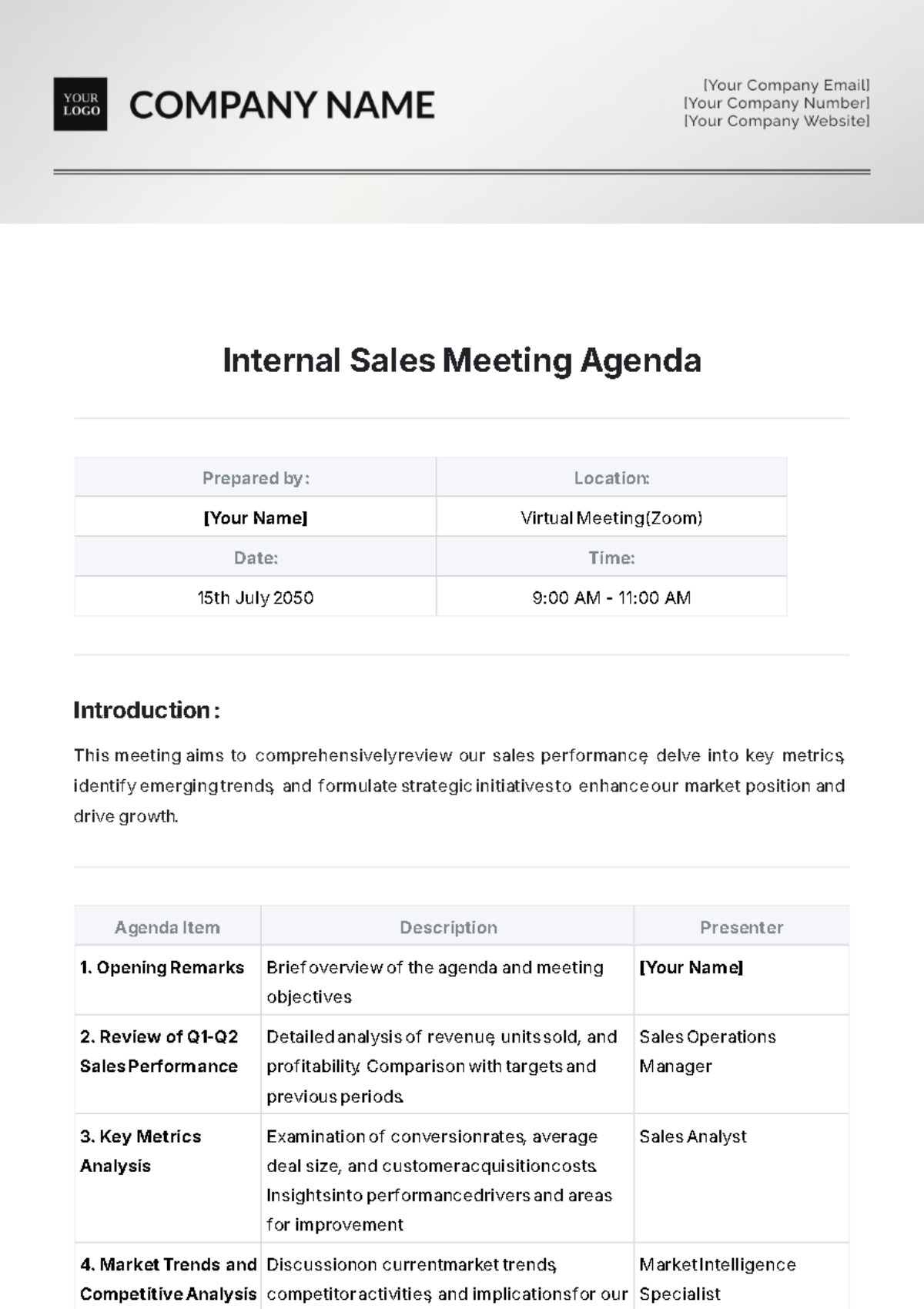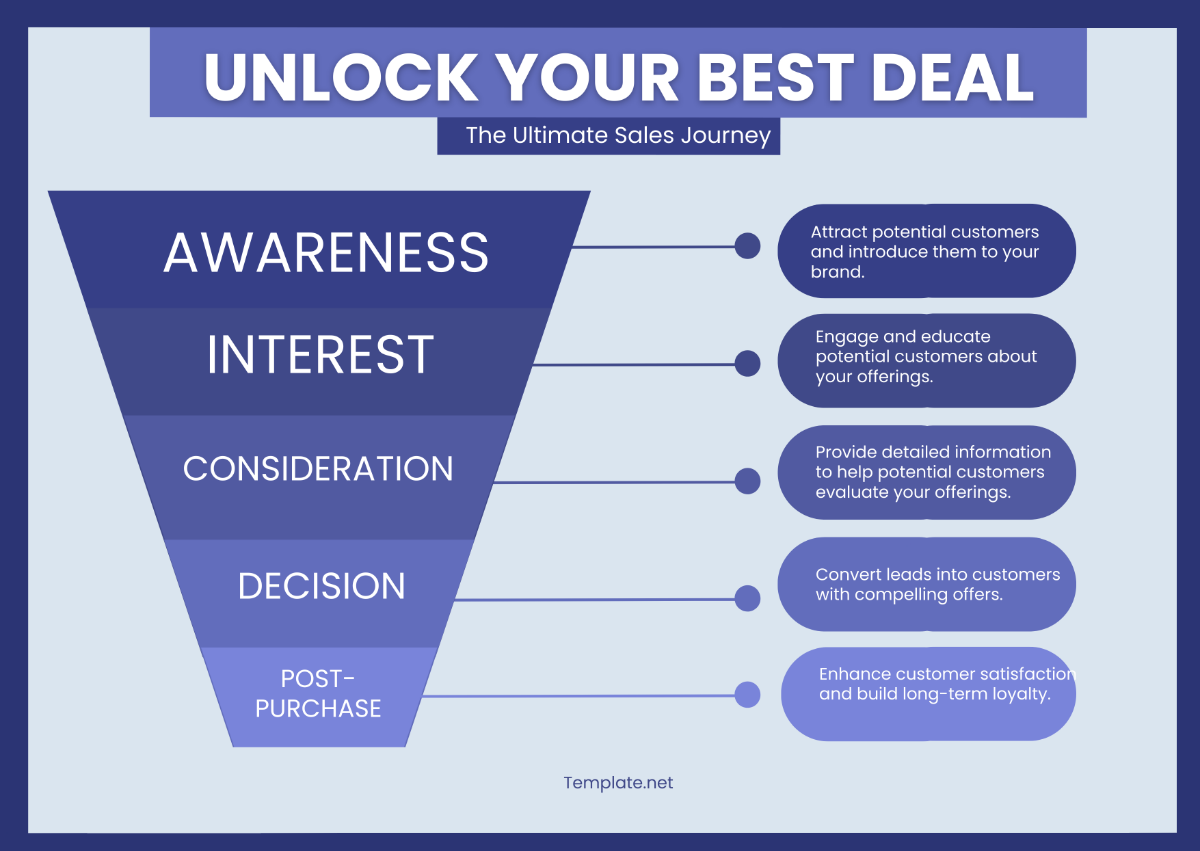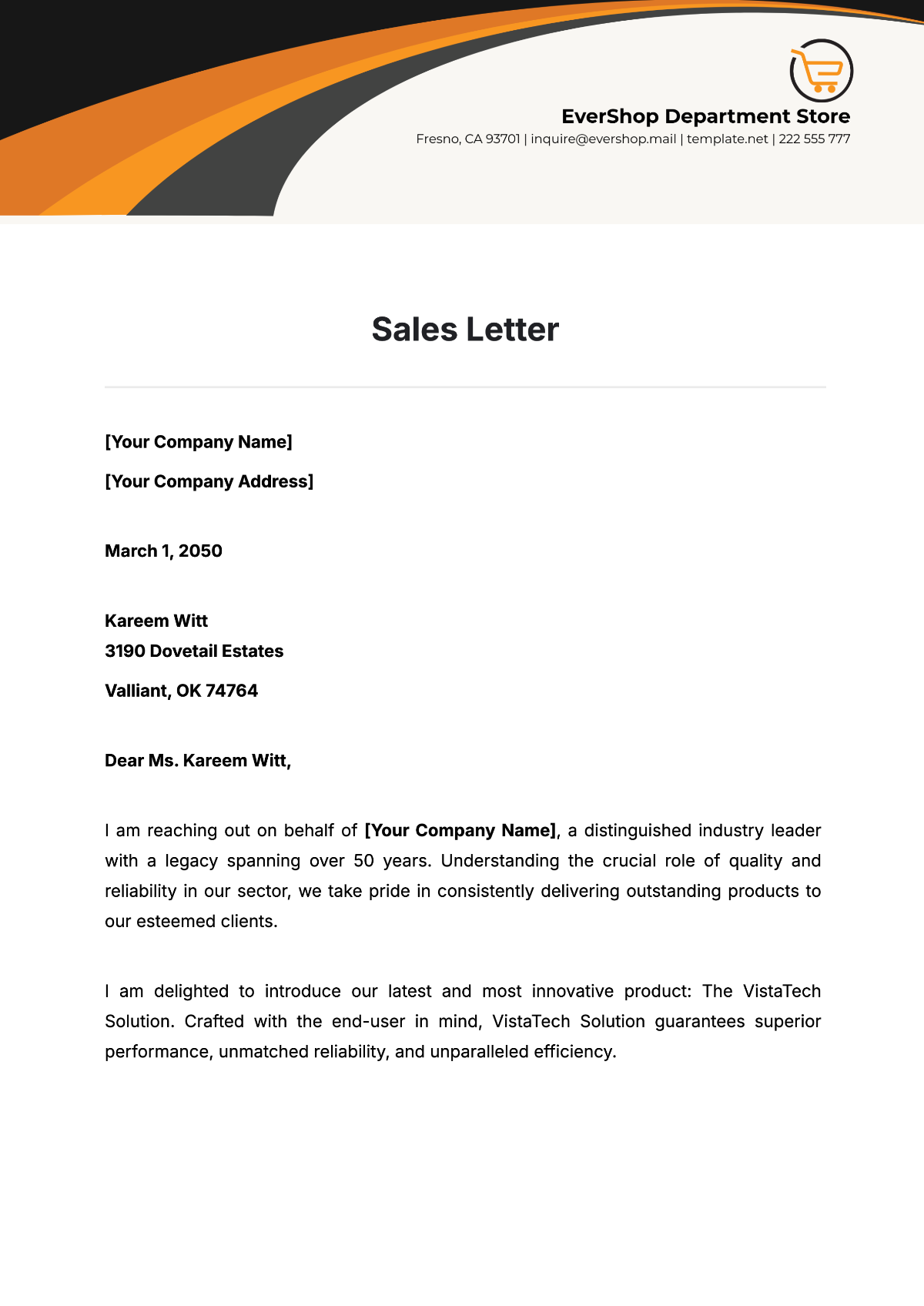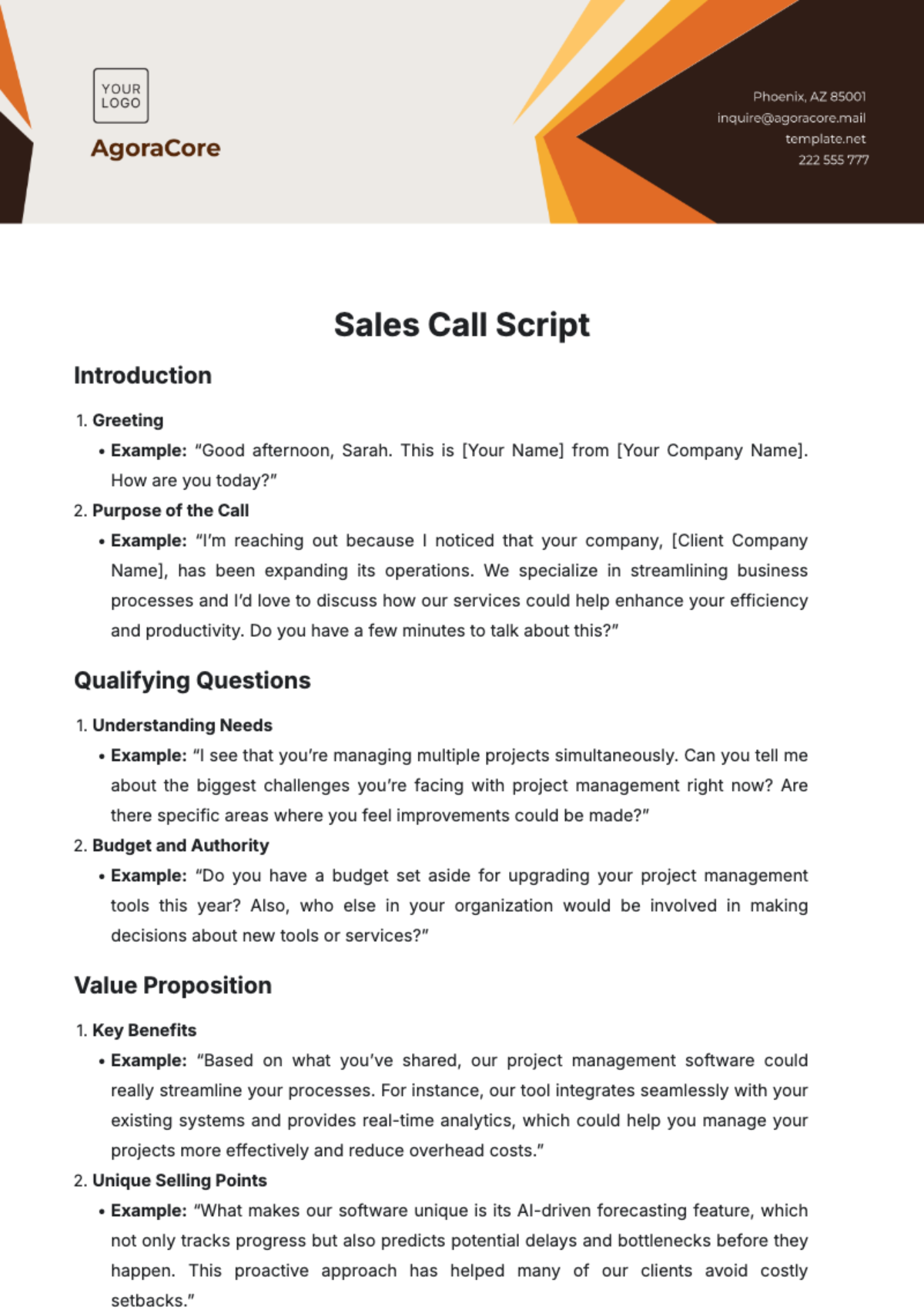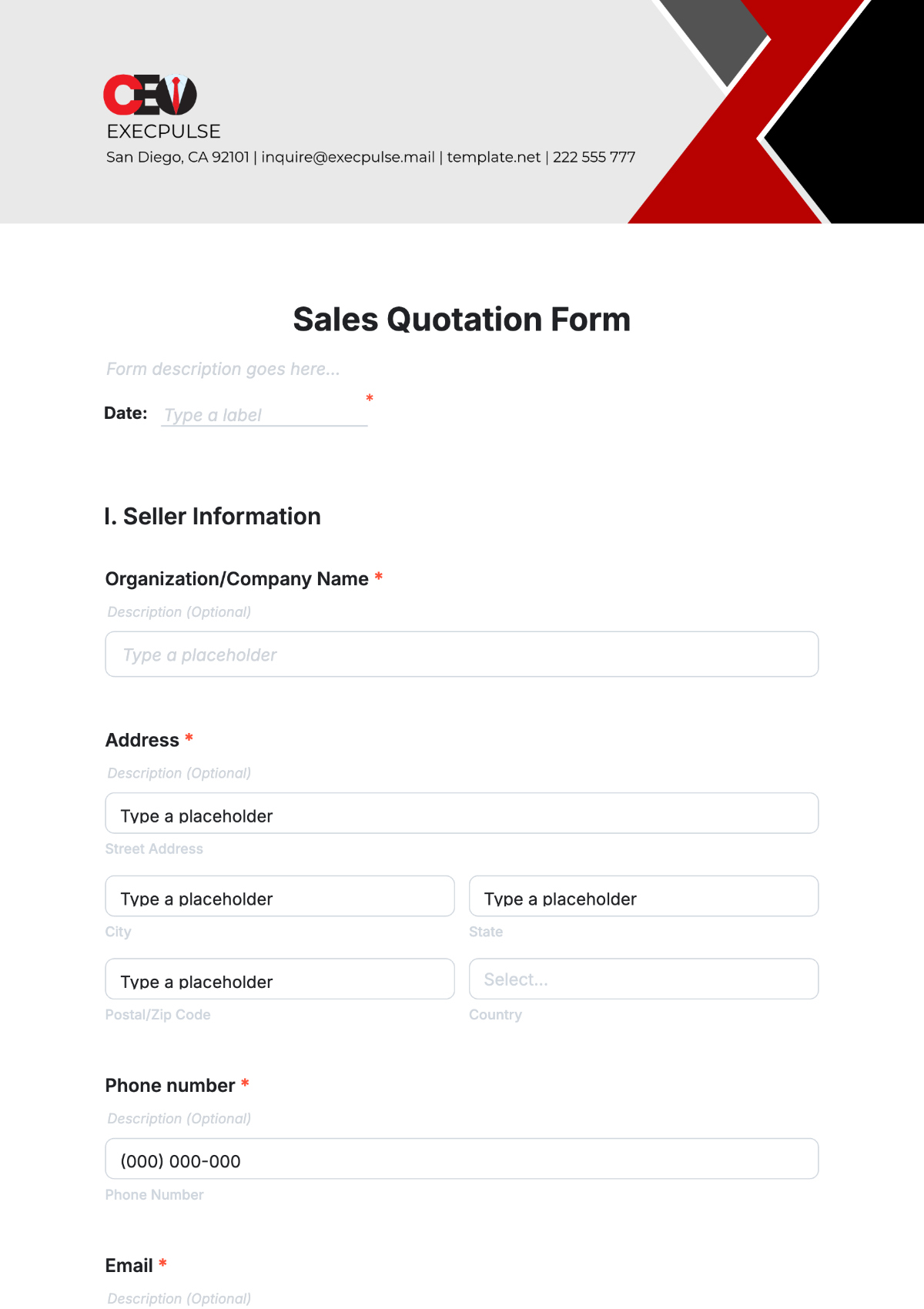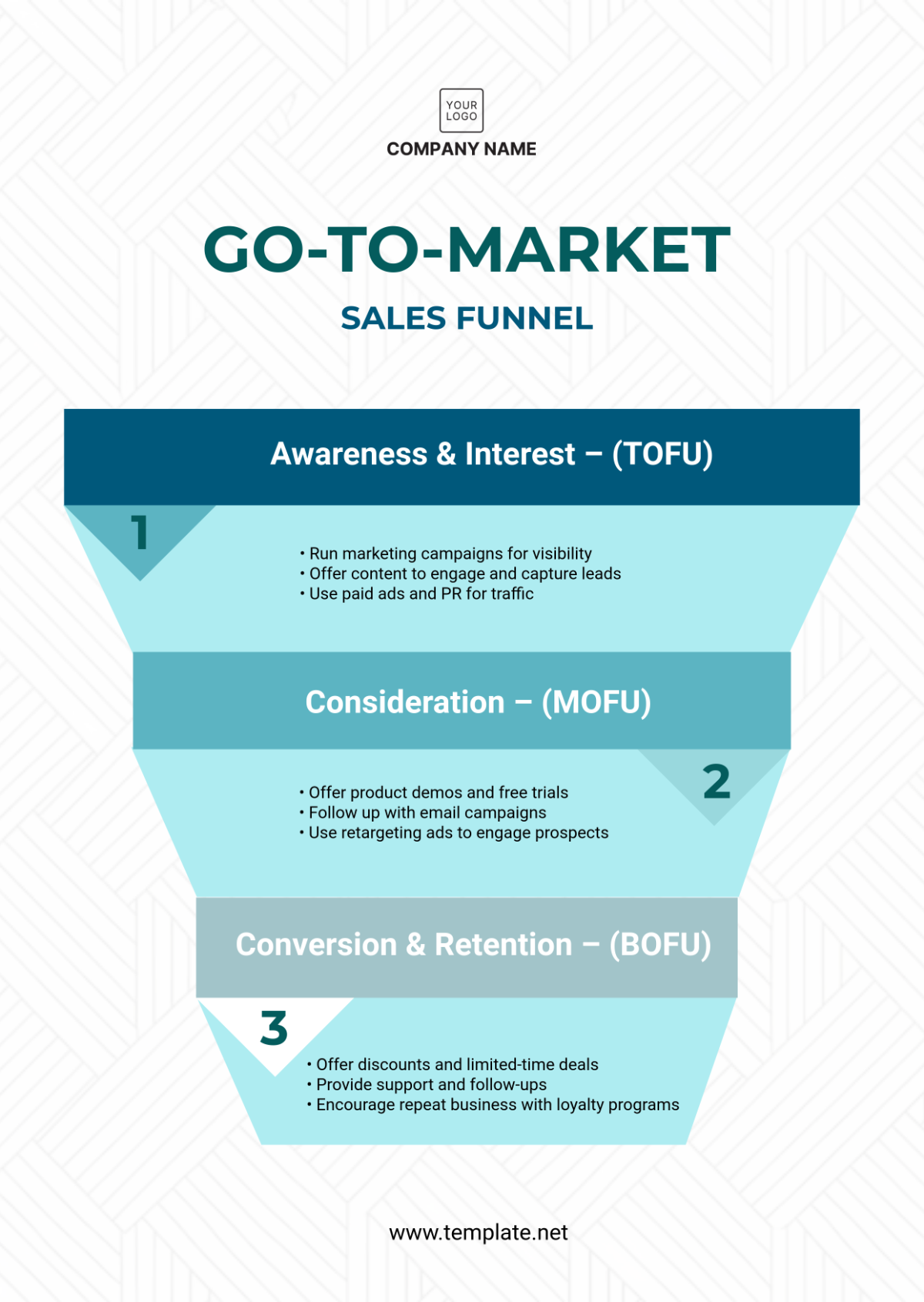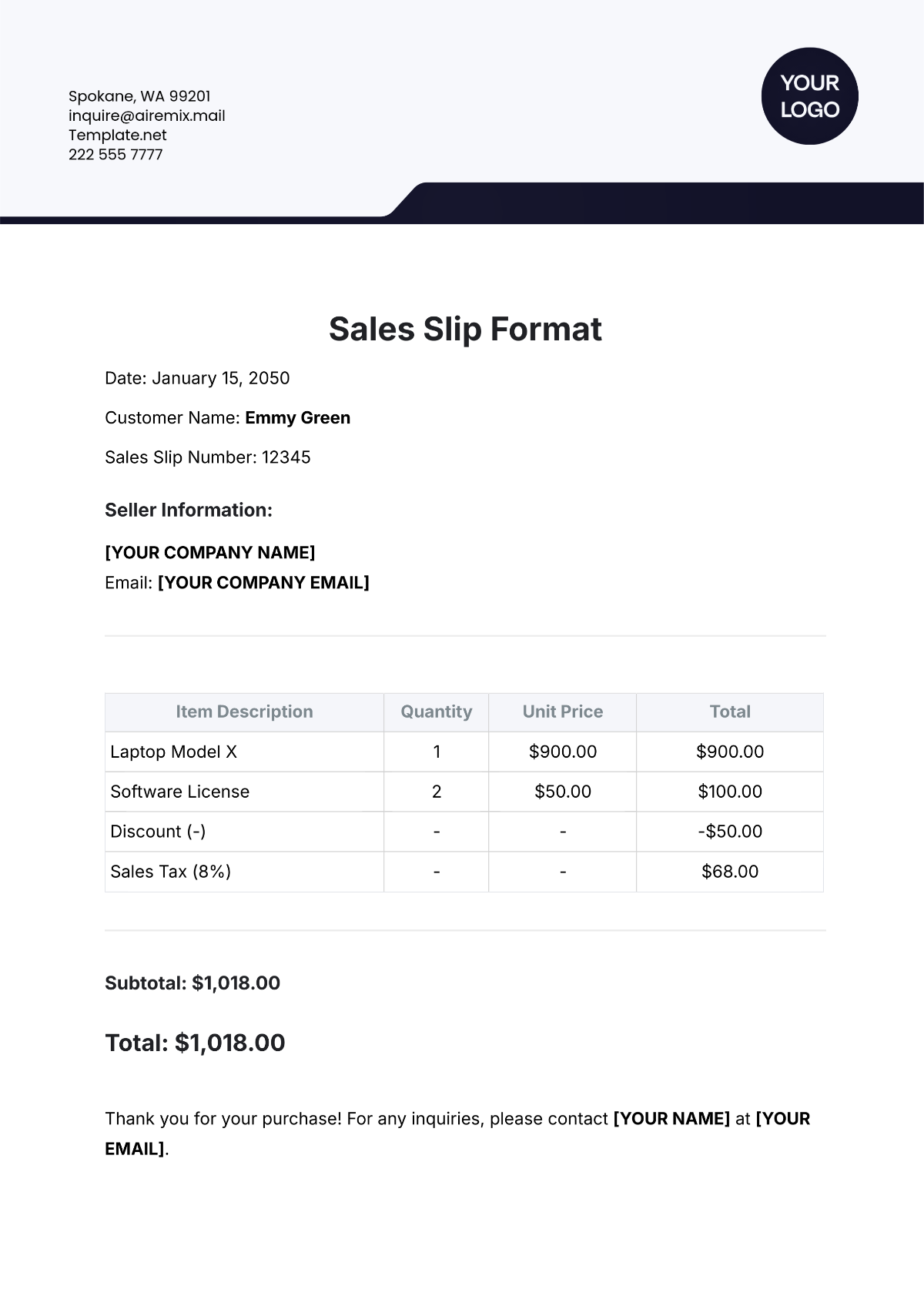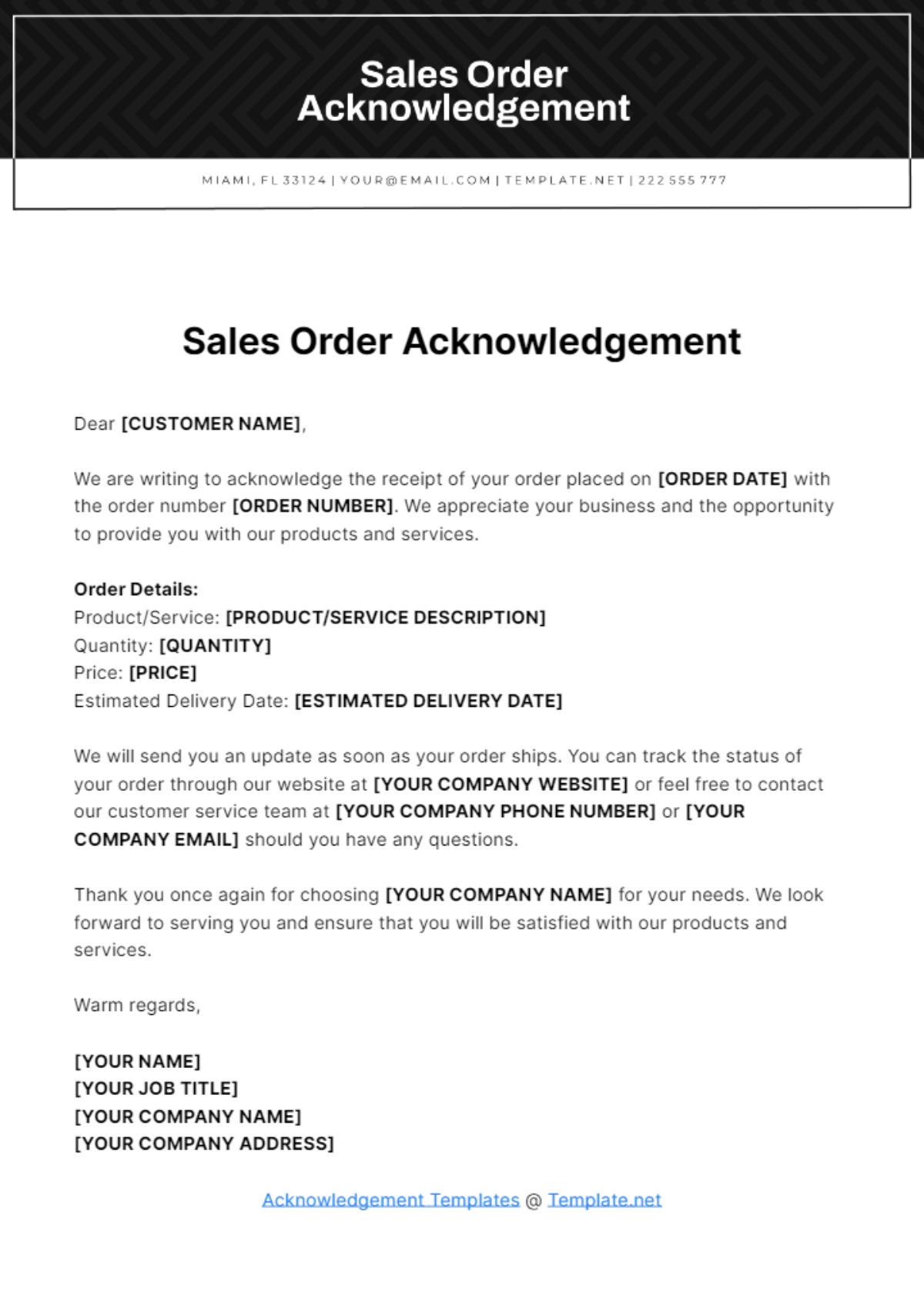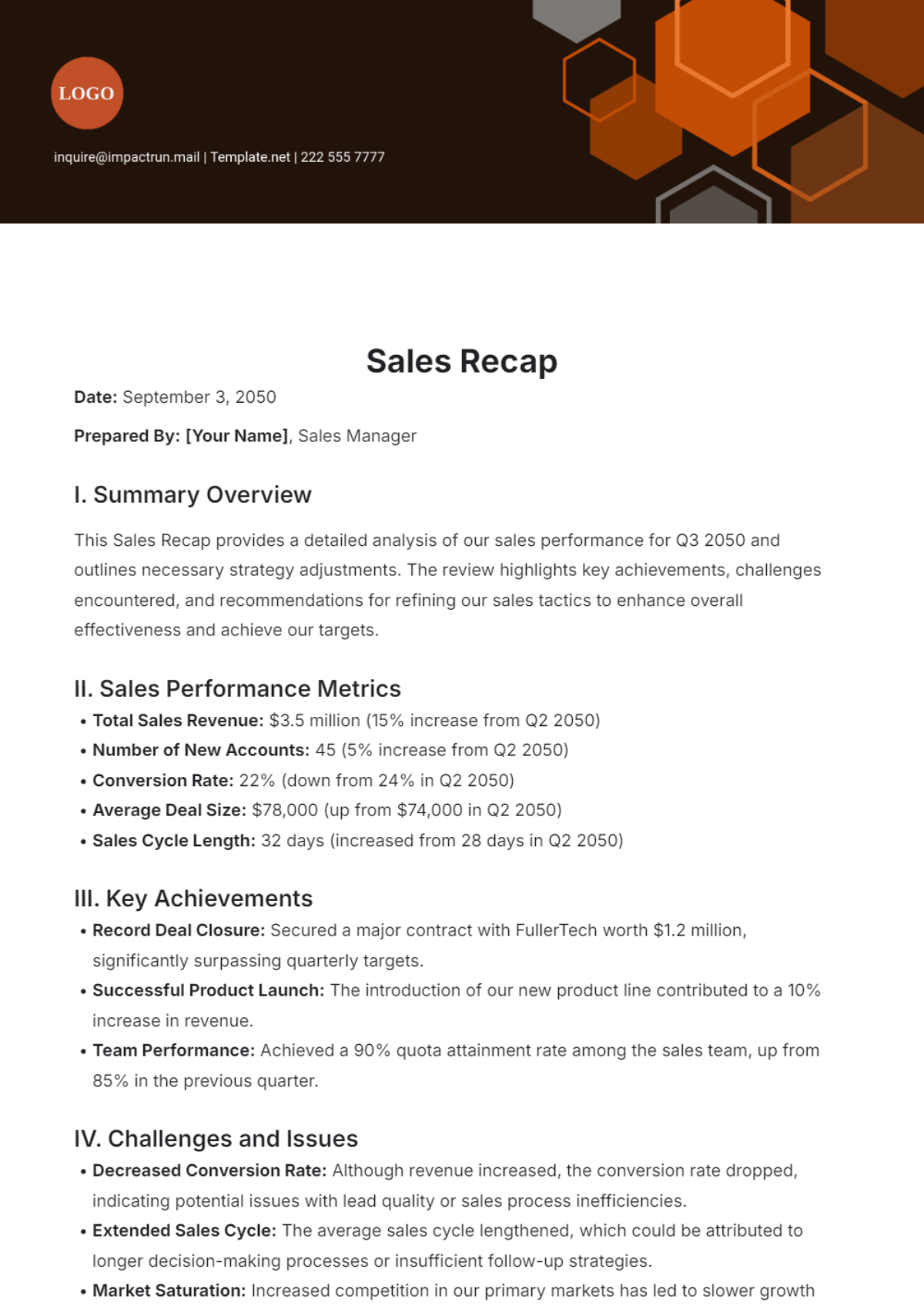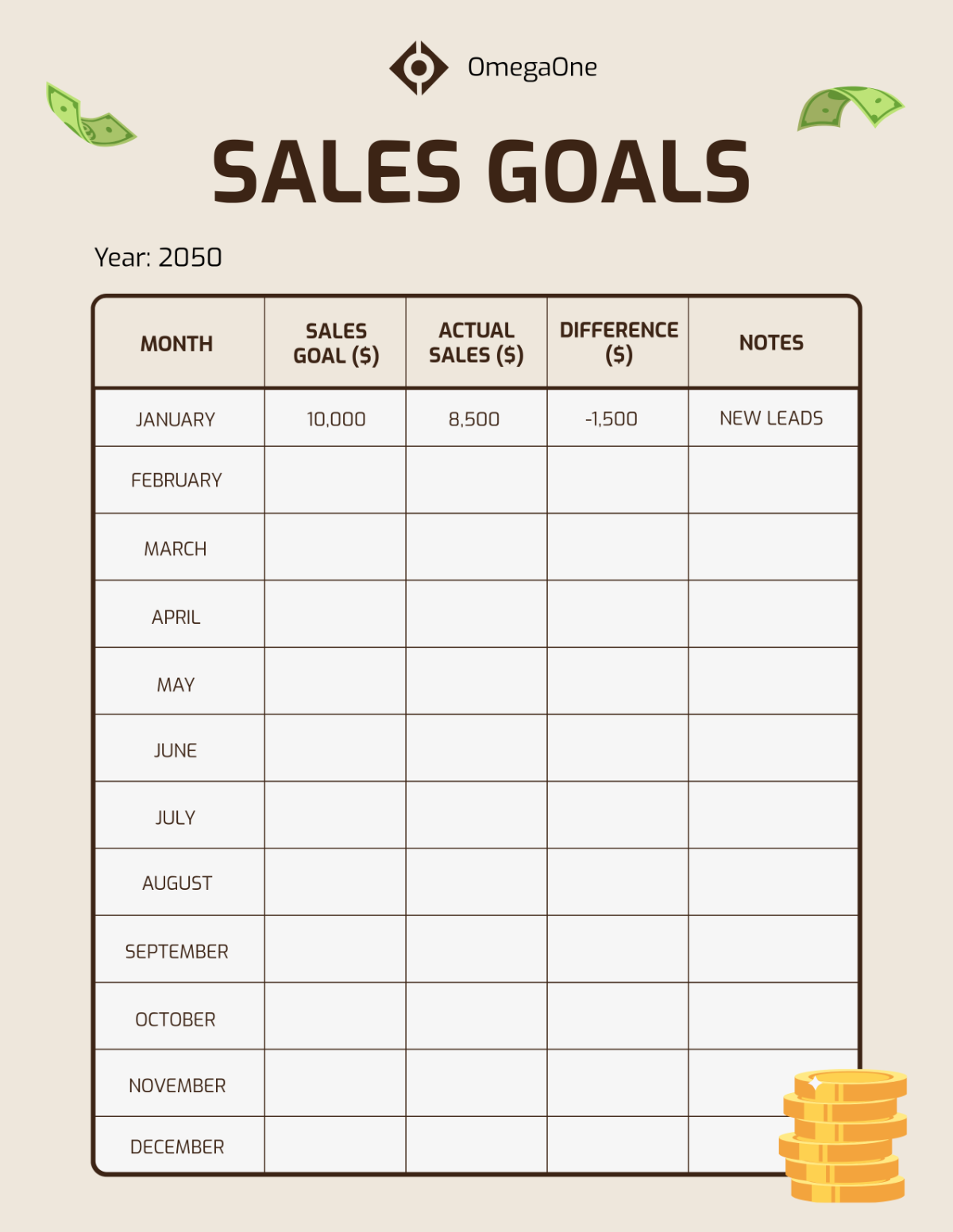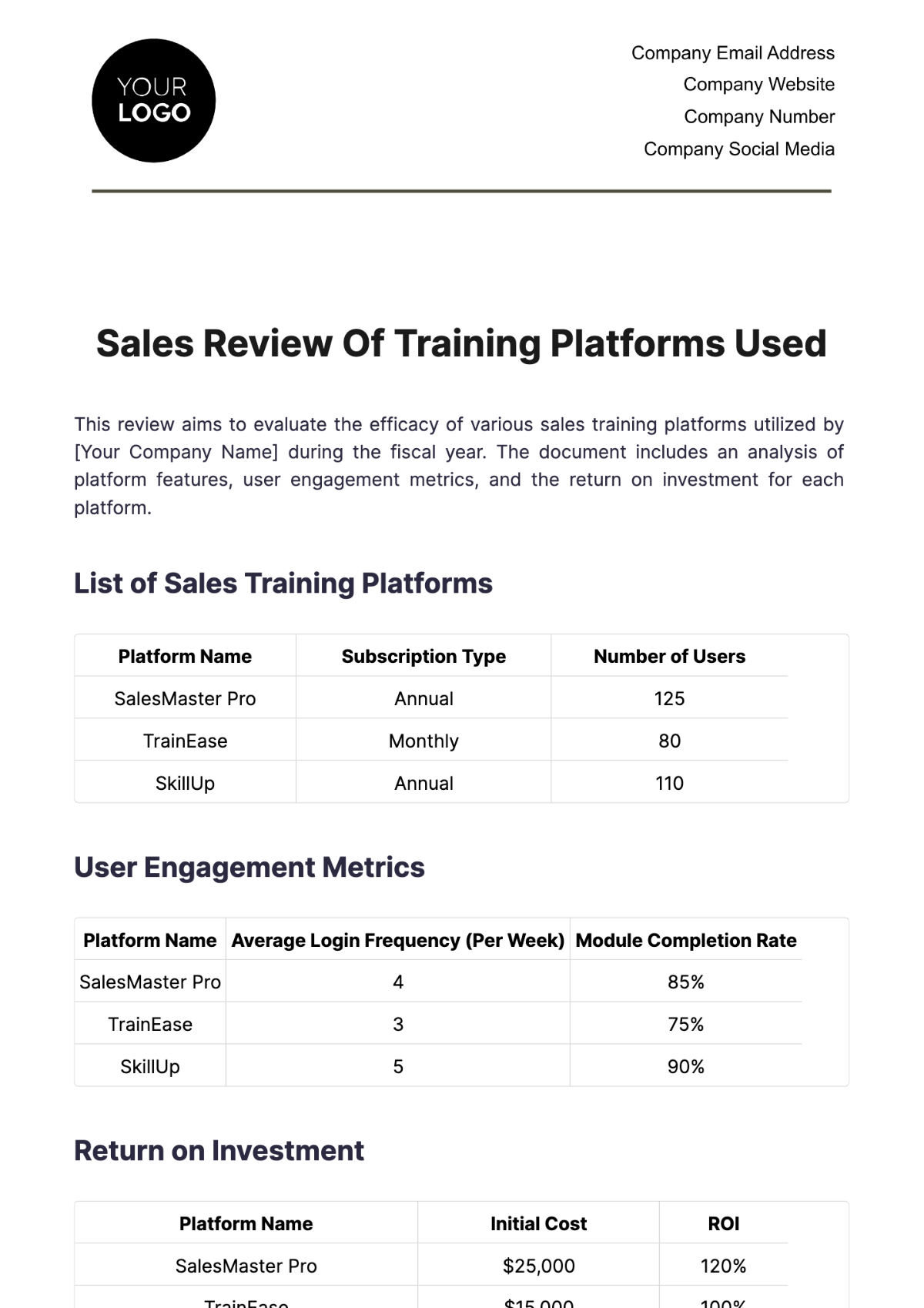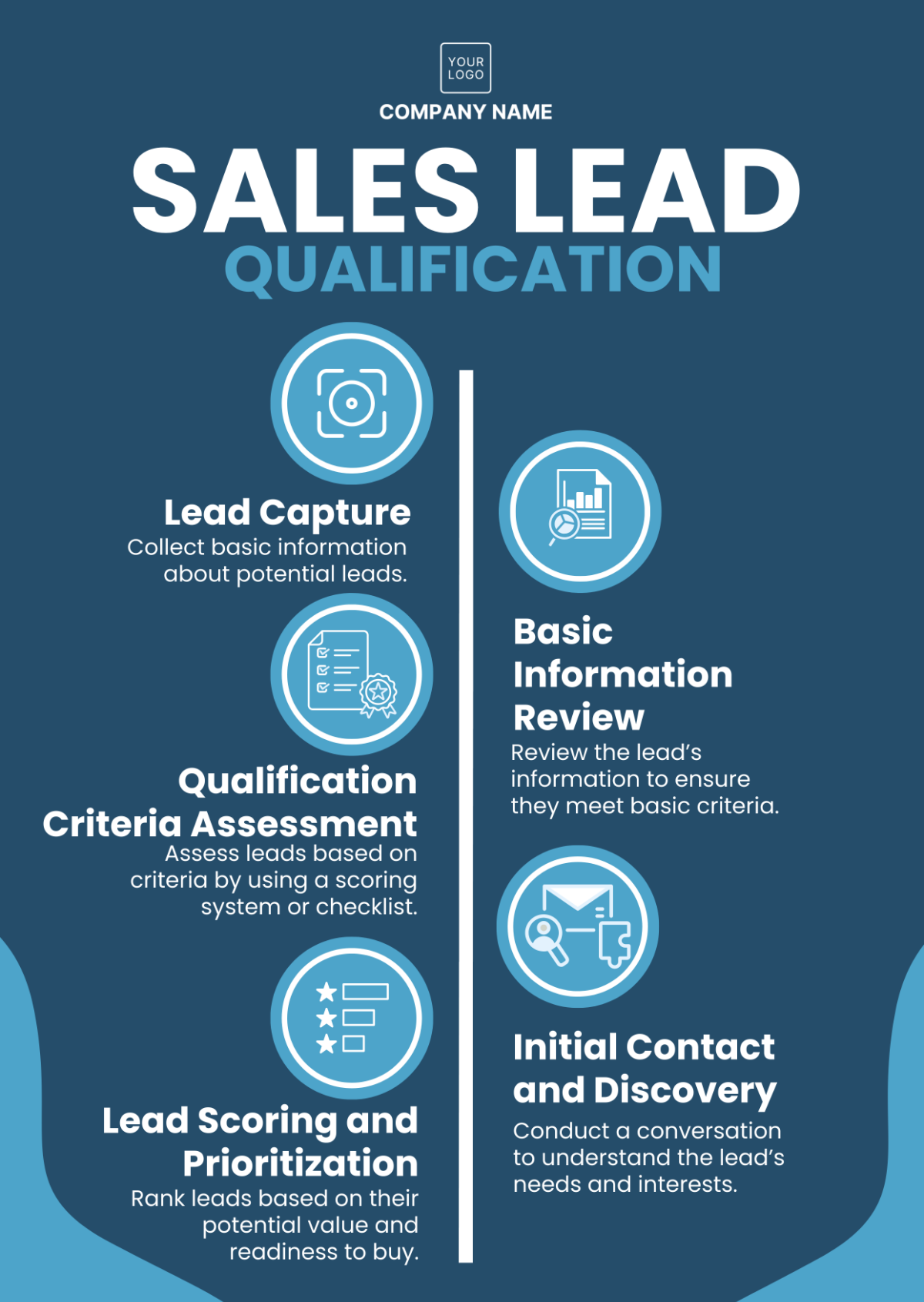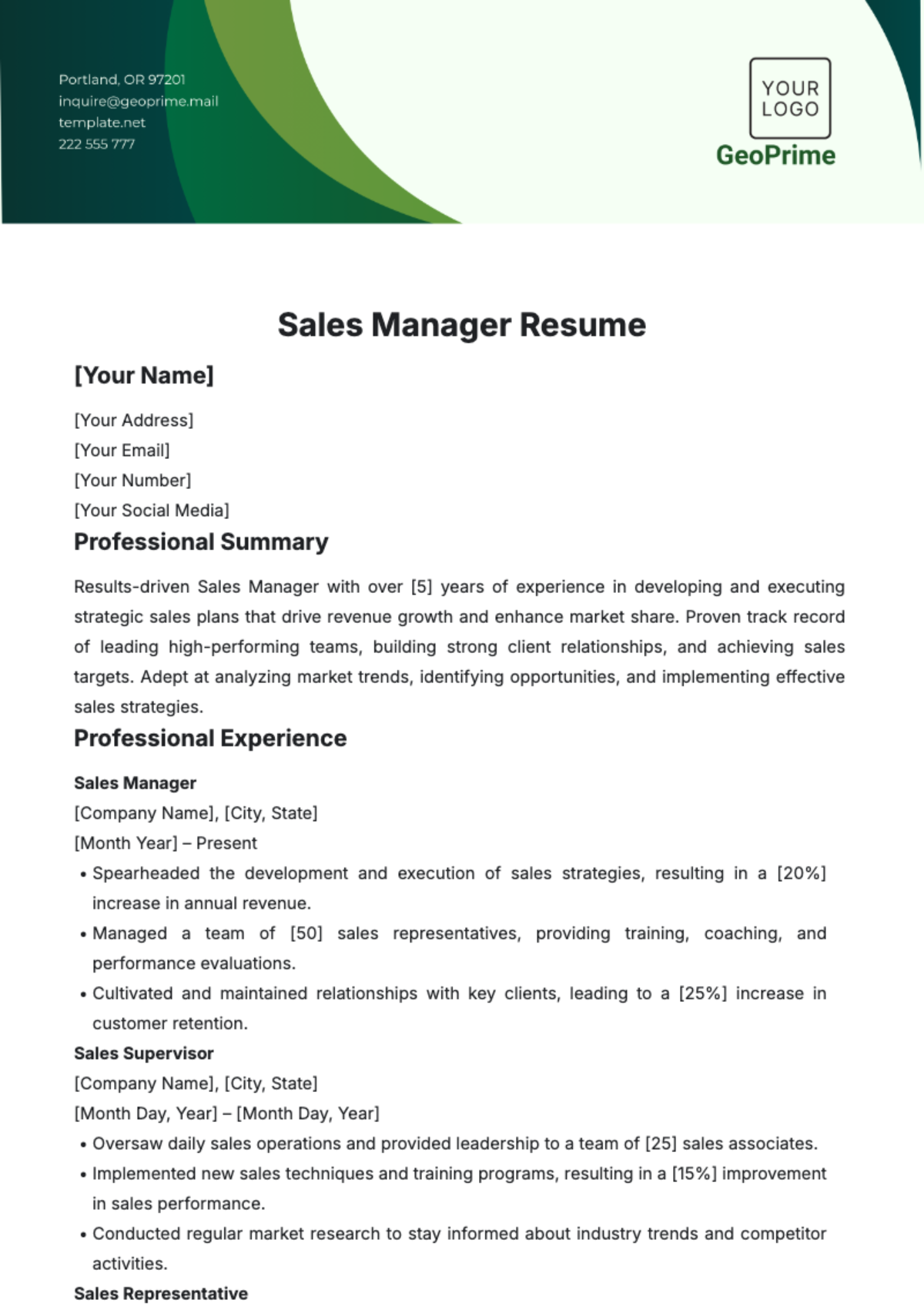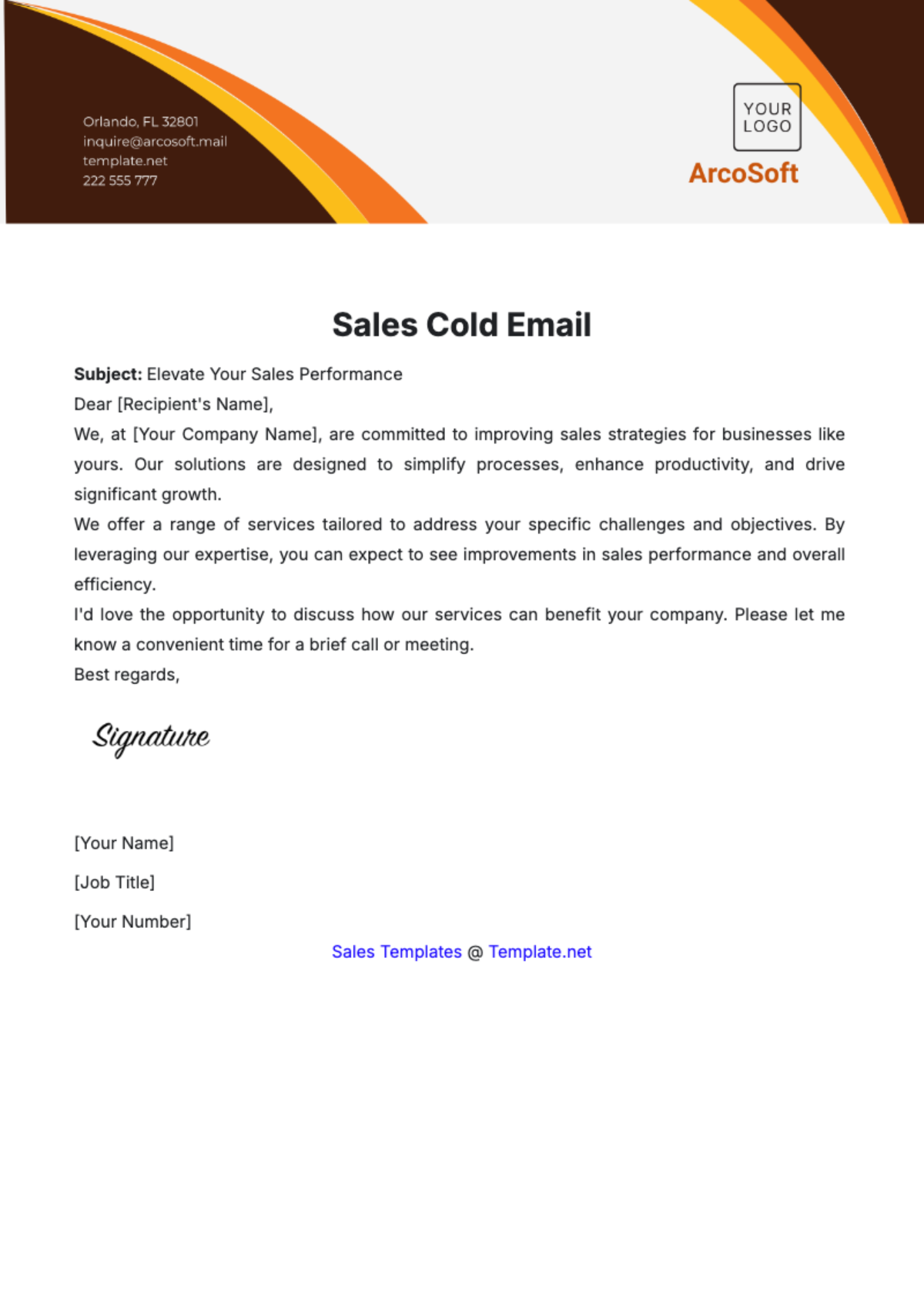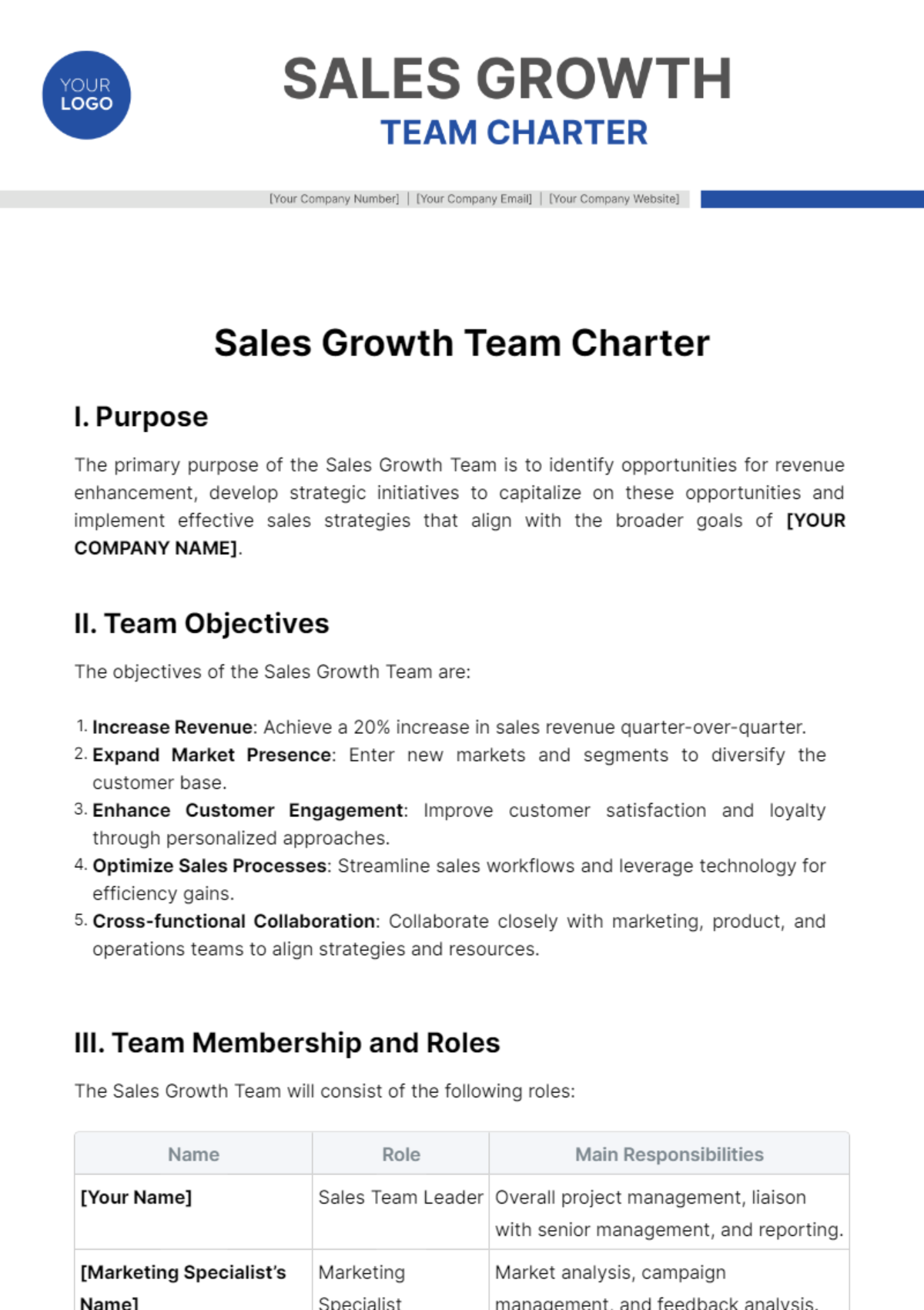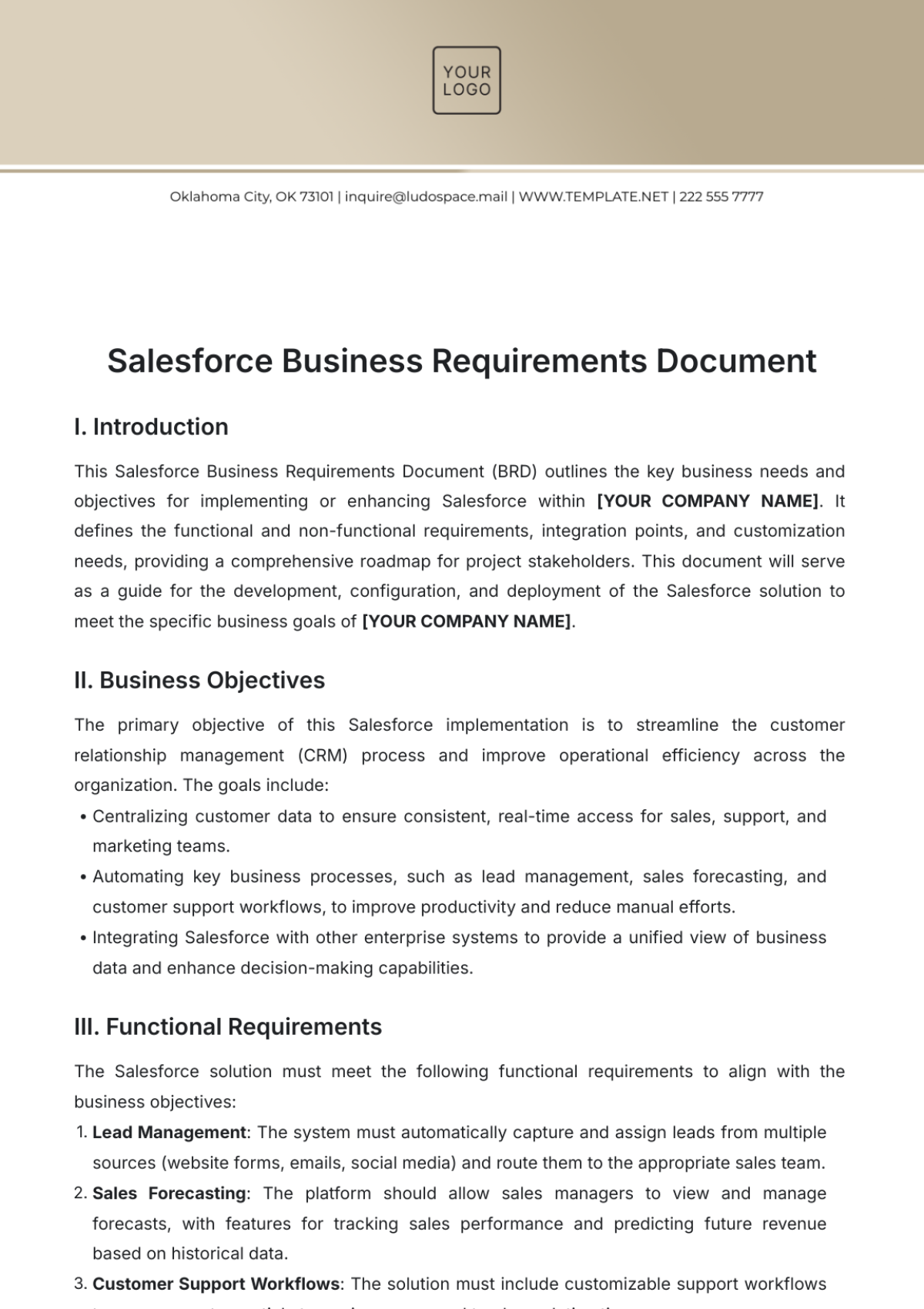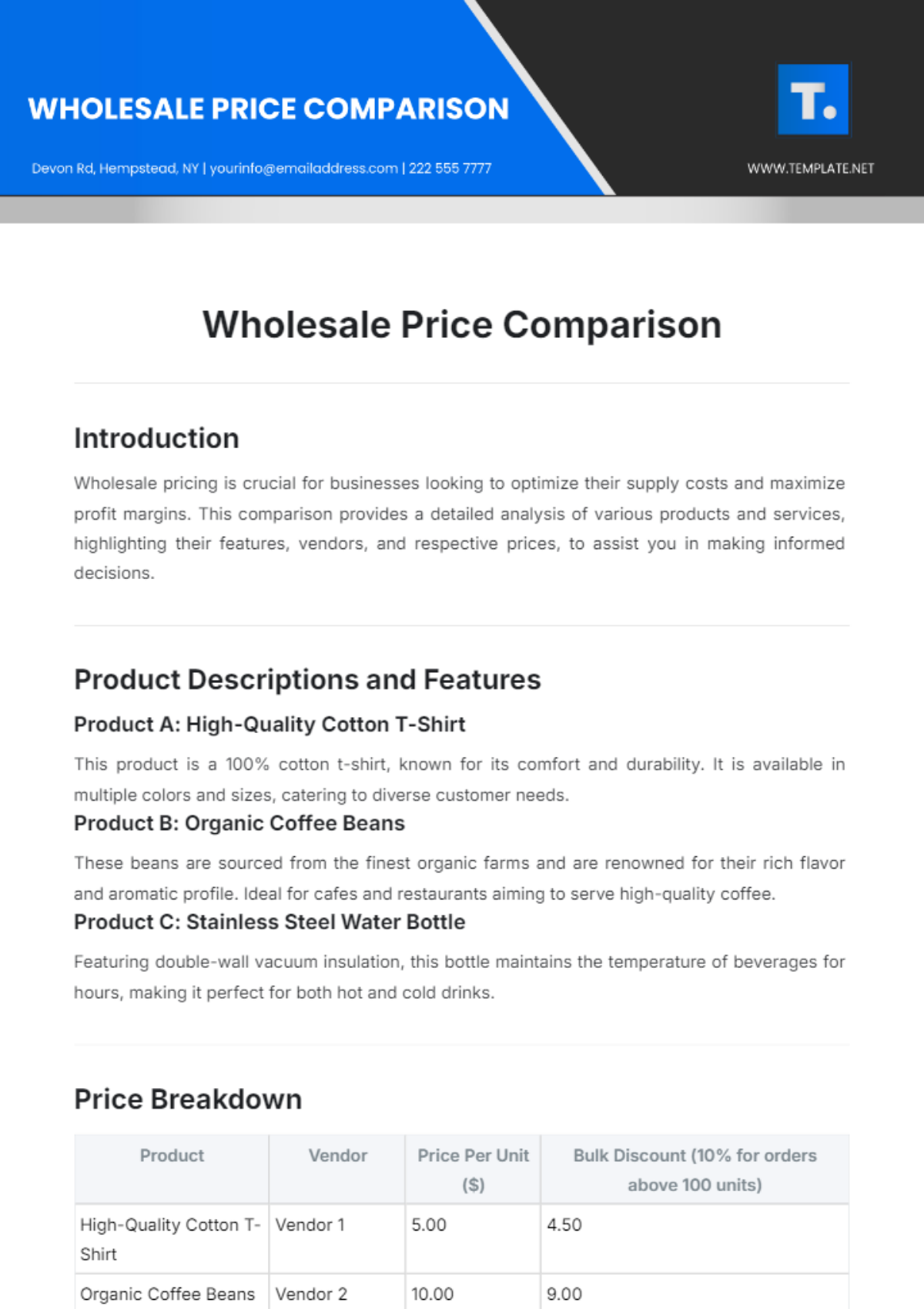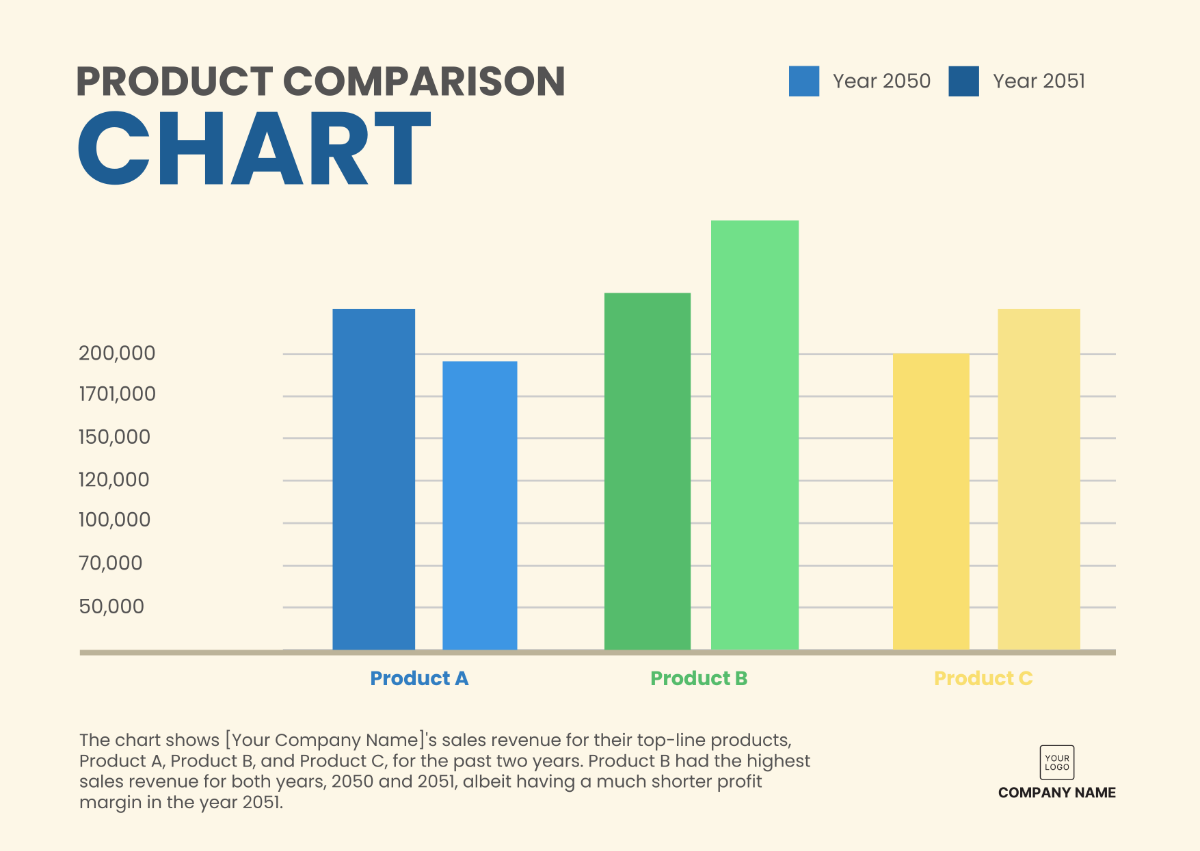Sales Document on Integrating Digital Tools in Trade Show Participation
1. Introduction
A. Overview of Trade Show Participation
Trade shows represent a cornerstone of modern business networking and marketing strategies. These events bring together companies from various industries, providing them with a unique platform to showcase their products, services, and innovations. Trade shows are not merely exhibitions; they are dynamic hubs where businesses can connect with potential clients, partners, and industry peers.
Participating in trade shows offers numerous advantages. It allows your company to:
Increase Visibility: Trade shows attract a diverse and relevant audience, offering your company exposure to a broader market and industry influencers.
Network Effectively: These events provide a concentrated environment for networking, fostering relationships with potential clients, partners, and suppliers.
Product and Service Showcases: Trade shows enable you to display your latest products, services, and innovations in a physical space, allowing attendees to interact with them directly.
Market Research: Interacting with attendees and competitors provides valuable insights into market trends, consumer preferences, and your industry's competitive landscape.
However, the traditional methods of trade show participation have evolved in recent years due to the increasing prevalence of digital technology in all aspects of business.
2. Importance of Digital Tools
In the era of digital transformation, integrating digital tools into your trade show strategy is no longer optional; it's imperative. Here's why:
Enhanced Engagement: Digital tools, such as interactive displays, augmented reality, and virtual reality experiences, captivate attendees and create memorable interactions. They transform passive observers into engaged participants.
Personalization: Digital tools enable you to deliver tailored content and experiences to individual attendees, addressing their specific interests and needs. This personal touch sets your company apart and deepens connections.
Data-Driven Decision-Making: With the integration of digital tools, you gain access to valuable data and analytics. You can track attendee behavior, preferences, and interactions, empowering you to make data-driven decisions that improve your trade show strategy.
Cost Efficiency: Embracing digital tools can lead to cost savings in areas like printing and shipping. Digital brochures, catalogs, and interactive materials reduce the need for extensive physical collateral.
Competitive Advantage: Staying ahead in the market means embracing digital innovation. Companies that leverage digital tools at trade shows demonstrate their commitment to staying at the forefront of industry trends.
3. Benefits of Integrating Digital Tools
A. Cost Savings
Reduced Printing Costs
Trade shows have traditionally relied on printed materials such as brochures, catalogs, and promotional materials to convey information to attendees. However, this approach incurs significant costs related to design, printing, and shipping. By shifting to digital tools, you can substantially reduce these expenses. Digital brochures, catalogs, and product information can be easily updated and distributed electronically, eliminating the need for large print runs and shipping logistics.
Streamlined Communication
Efficient communication is paramount during trade shows. Digital tools facilitate real-time communication through various channels, such as instant messaging and video conferencing. This reduces the need for additional staff members to manage inquiries, freeing up your team to focus on building valuable connections with attendees.
B. Improved Customer Engagement
Interactive Booth Displays
Digital tools offer the opportunity to transform your trade show booth into an interactive experience. Touchscreen displays, interactive kiosks, and virtual reality setups capture attendees' attention and create a dynamic atmosphere. Visitors can engage with your products or services in a unique and memorable way, leaving a lasting impression.
Personalized Content
Tailoring your messaging to the specific needs and interests of attendees is a powerful way to boost engagement. Digital tools enable you to deliver personalized content based on attendee interactions and preferences. Whether it's customized product recommendations or targeted marketing materials, personalization enhances the attendee experience and increases the likelihood of conversion.
C. Data Analytics and Insights
Visitor Analytics
Understanding your trade show audience is essential for refining your marketing strategy. Digital tools provide the capability to gather detailed visitor analytics. You can track demographic information, the duration of booth visits, and the content that resonates most with attendees. This data empowers you to make informed decisions and adapt your approach during the event.
Lead Generation
Efficient lead generation is a primary objective at trade shows. Digital tools streamline this process by capturing attendee information electronically. By integrating lead capture solutions, you can quickly qualify leads and categorize them for follow-up. This automation ensures that you maximize the potential of every interaction, ultimately resulting in a higher return on investment (ROI).
4. Choosing the Right Digital Tools
A. Evaluation Criteria
Selecting the appropriate digital tools for your trade show participation is a critical decision. To ensure the success of your integration efforts, consider the following evaluation criteria:
Compatibility: The selected digital tools must align seamlessly with your trade show objectives and booth design. Compatibility ensures that the tools enhance rather than detract from your overall presentation. Evaluate whether the tools can be integrated into your existing booth layout and whether they complement your brand's visual identity.
User-Friendliness: Opt for digital tools that are user-friendly both for your staff and trade show attendees. An intuitive interface minimizes training time for your team and enhances the attendee experience. Tools that are easy to navigate and interact with will have a more significant impact on engagement.
Customization: Assess the level of customization the tools offer. The ability to tailor content and interactions to your specific goals and target audience is crucial. Look for tools that allow you to create personalized experiences that resonate with your booth visitors.
Scalability: Consider whether the chosen digital tools can scale to accommodate various trade show sizes and formats. Flexibility in usage ensures that your investment in digital tools remains relevant across multiple events and markets.
Technical Support and Maintenance: Evaluate the availability of technical support and maintenance services from the tool provider. Reliable support ensures that any issues or updates are addressed promptly, minimizing disruptions during trade shows.
B. Sample Digital Tool Providers
To help you get started on your journey to integrating digital tools, here are some sample digital tool providers that have a proven track record in enhancing trade show experiences:
[Your Partner Company Name 1]: This reputable provider specializes in cutting-edge digital solutions tailored for trade show integration. Their extensive experience and portfolio of successful implementations make them a valuable partner in transforming your trade show presence. For inquiries, contact [Your Partner Company Email 1].
[Your Partner Company Name 2]: Known for their expertise in interactive displays and virtual reality experiences, [Your Partner Company Name 2] offers innovative solutions that captivate trade show attendees. Their team is dedicated to helping you create engaging and memorable interactions. Reach out to them at [Your Partner Company Email 2].
5. Integration Process
A. Pre-Event Planning
Successful integration of digital tools begins with thorough pre-event planning. This phase lays the foundation for a seamless trade show experience. Here are the key steps involved:
Define Objectives and Key Performance Indicators (KPIs): Start by clearly defining your trade show objectives. Are you looking to generate leads, showcase new products, or establish thought leadership? Establishing KPIs ensures that your goals are measurable and attainable.
Create a Detailed Plan: Develop a comprehensive plan that outlines how digital tools will be incorporated into your booth design and overall strategy. Identify specific tools and technologies to be used and allocate resources accordingly.
Content Development: Craft compelling digital content that aligns with your messaging and objectives. Ensure that the content is engaging, informative, and tailored to your target audience. Content should be designed to take full advantage of the digital tools you've selected.
Staff Training: Prepare your booth staff for the integration of digital tools. Train them on how to use the tools effectively and engage with attendees. Staff should be well-versed in the technology to provide seamless interactions.
B. On-Site Implementation
Once you arrive at the trade show venue, it's time to execute your plan and bring your digital tools to life. Here are the critical steps for on-site implementation:
Set Up Digital Displays: Ensure that all digital displays, interactive kiosks, and hardware are set up correctly and function smoothly. Conduct thorough testing to identify and address any technical issues before the event begins.
Booth Layout: Optimize the layout of your booth to incorporate digital tools seamlessly. Consider factors such as traffic flow, accessibility, and the placement of interactive displays to maximize attendee engagement.
Staff Roles and Responsibilities: Clarify the roles and responsibilities of your booth staff during the event. Assign specific team members to manage digital tools, engage with attendees, and capture leads effectively.
6. Post-Event Analysis
The post-event analysis phase is crucial for evaluating the success of your digital tool integration and identifying areas for improvement. Here's what you should do:
Data Analysis: Review the data collected during the trade show, including visitor analytics and lead generation metrics. Analyze attendee behavior and interactions with digital tools to gain insights into their preferences and engagement levels.
Assessment of Objectives: Compare the actual results with the objectives and KPIs you established during the pre-event planning phase. Assess whether your digital tools contributed to achieving your goals.
Feedback Gathering: Gather feedback from booth staff and attendees about their experiences with the integrated digital tools. This feedback can provide valuable insights for refining your approach in future trade shows.
Adjustments and Improvements: Based on the analysis and feedback, make necessary adjustments and improvements to your digital tool integration strategy. Continuously refine your approach to enhance the impact of digital tools in future trade show participations.
7. Case Studies
A. [Your Company Name]'s Success Story
Objective:
At our recent participation in the [Trade Show Name] in [Year], our primary objective was to boost lead generation and create a memorable brand presence in a highly competitive environment.
Implementation:
We integrated digital tools seamlessly into our booth design. This included interactive touchscreen displays showcasing our product catalog and virtual reality stations offering immersive product demos. We also employed a lead capture app for efficient data collection.
B. Results
Lead Generation: We achieved a 30% increase in leads compared to previous years, totaling over 500 high-quality leads during the event.
Engagement: Attendees spent an average of 8 minutes interacting with our digital displays, a significant improvement over traditional brochures.
Customer Feedback: Attendees praised our innovative approach, with several mentioning how our digital tools set us apart from competitors.
ROI: Our ROI analysis indicated a 25% increase in revenue directly attributable to the use of digital tools, with a positive ROI of 3.5.
C. Testimonials
"The virtual reality experience at [Your Company Name]'s booth was incredible. It made me feel like I was using the product in real life." - [Client Name]
"The ease of providing my contact information through their app was impressive. It saved me time and ensured accurate data capture." - [Client Name]
8. ROI Analysis
A. Calculating Return on Investment (ROI)
Cost Analysis:
Digital Tool Expenses: $20,000 for hardware and software.
Content Development: $5,000 for interactive content creation.
Staff Training: $2,500 for training sessions.
Maintenance: $1,200 for ongoing support and updates.
Total Costs: $28,700
Revenue and Benefits:
Leads Generated: 500 leads with an estimated conversion rate of 20%.
Sales Generated: $150,000 in direct sales attributed to trade show leads.
Cost Savings: $5,000 in reduced printing and collateral costs.
Total Benefits: $185,000
ROI Calculation:
ROI = (Net Profit / Total Costs) x 100
ROI = (($185,000 - $28,700) / $28,700) x 100
ROI = 545.2%
ROI Interpretation:
Our calculated ROI of 545.2% demonstrates the outstanding success of our digital tool integration. The benefits significantly outweigh the costs, confirming the effectiveness of our strategy.
9. Conclusion
A. Key Takeaways
In this concluding section, we summarize the key takeaways and main points discussed throughout the document. It serves as a concise recap and reinforces the significance of integrating digital tools into your trade show participation strategy. Here are the key takeaways:
Digital Tools Enhance Engagement: The integration of digital tools transforms your trade show presence from static to interactive. These tools captivate attendees, offering them immersive experiences and personalized content.
Data-Driven Decision-Making: Digital tools provide valuable data and analytics, allowing you to make informed decisions and optimize your trade show strategy. Visitor insights, lead generation metrics, and real-time data empower you to refine your approach.
Cost Savings and Efficiency: Embracing digital tools can lead to cost savings in areas like printing and staffing. The efficiency and adaptability of these tools ensure a high return on investment (ROI).
Tailored Experiences: Personalization is key in today's marketing landscape. Digital tools enable you to tailor content and interactions to individual attendees, making your brand more relatable and memorable.
Continuous Improvement: Learning from your own success stories and industry best practices, as well as conducting thorough ROI analysis, allows you to continuously improve your trade show strategy. Embrace a culture of innovation and adaptation.
B. Contact Information
To explore how [Your Company Name] can assist you in integrating digital tools into your trade show strategy and achieve the success outlined in this document, please don't hesitate to reach out to us. We are here to support your trade show objectives and drive success in the digital age.
For more information, please contact:
[Your Name]
[Your Company Email]
[Your Company Address]
[Your Company Number]
